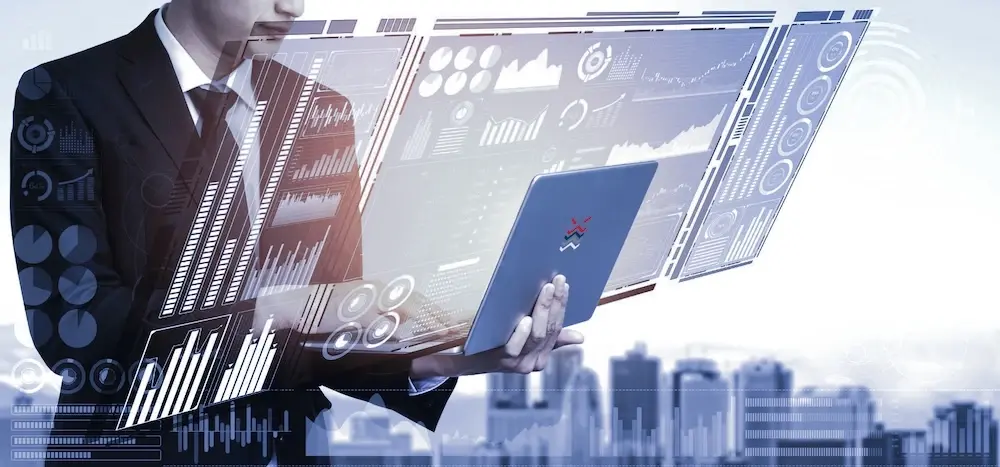The future of intralogistics: trends and emerging technologies

Intralogistics is undergoing a significant transformation, driven by the adoption of advanced technologies and the need to address new operational challenges. According to Next Move Strategy Consulting, the global intralogistics market was valued at $63.71 billion in 2024 and is projected to reach $71.61 billion in 2025, with expectations to grow to $112.17 billion by 2030, registering a CAGR of 9.4% from 2025 to 2030.
Driven by robotics, AI, IoT and data intelligence, intralogistics is becoming increasingly connected, automated and resilient. But the shift also brings critical challenges in integration, scalability and workforce transformation.
Key trends in intralogistics
Warehouse automation
Automation serves as a strategic lever to enhance productivity and reduce operational costs. The warehouse automation market is estimated at $29.91 billion in 2025 and is projected to advance to $63.36 billion by 2030, reflecting a robust 16.2% CAGR.
Common solutions include:
- Automated Storage and Retrieval Systems (AS/RS): optimize space and expedite storage and retrieval operations.
- Autonomous Mobile Robots (AMRs) and Automated Guided Vehicles (AGVs): enhance material flow flexibility, reducing errors and handling times. By 2025, over 4 million commercial warehouse robots are expected to be installed across more than 50,000 warehouses globally.
- Robotic picking systems: enable precise automatic item picking, integrating seamlessly with warehouse management platforms.
For comprehensive solutions in warehouse automation, including stacker cranes and Multi Level Shuttle systems, you can explore Smartlogistix's offerings here: Automated Warehouse Solutions.
Artificial intelligence and machine learning
Artificial intelligence is increasingly central to decision-making and optimization processes:
- Demand forecasting: advanced data analysis to anticipate consumption trends and plan inventory.
- Predictive maintenance: Intelligent monitoring of equipment to prevent failures and optimize maintenance schedules.
- Resource optimization: algorithms dynamically adjust robot paths and operator management.
According to World Metrics, 70% of warehouse industries plan to invest more in AI systems over the next two years.
Internet of Things (IoT) and connectivity
IoT enables data collection from the field, providing real-time visibility into:
- Inventory and material status
- Environmental conditions (temperature, humidity)
- Equipment performance
Data analytics and digital twin
Data analysis and digital twins (virtual replicas of physical processes) allow for:
- Simulation of operational scenarios and optimization of facility layouts
- Prediction of bottlenecks and inefficiencies
- Improved resource planning and peak demand management
48% of warehouses are developing digital twin models to simulate, monitor, improve and streamline operations.
Emerging technologies
| Technology | Primary Application | Expected Benefits |
|---|---|---|
| Autonomous Mobile Robots | Automated material handling | Flexibility, error reduction |
| Artificial Intelligence | Forecasting, optimization, maintenance | Efficiency, cost reduction |
| IoT and Smart Sensors | Real-time monitoring | Visibility, traceability |
| Digital Twins | Process simulation and optimization | Planning, risk reduction |
| Blockchain | Data traceability and security | Transparency, compliance |
| Inventory Drones | Automated stock control | Speed, accuracy |
| Cobots | Human-machine collaboration in picking | Safety, productivity |
Challenges and opportunities
Main challenges
- Integration with legacy systems: compatibility between new technologies and existing infrastructures can be complex.
- Staff training: updating operator skills is essential for managing digital and automated solutions.
- Cybersecurity: digitalization exposes systems to new risks, necessitating advanced protection strategies.
Opportunities
- Scalability: modular solutions allow for gradual expansion of automation.
- Enhanced resilience: automated and digitized processes increase responsiveness to unforeseen events.
Conclusion
Intralogistics is experiencing a profound transformation, driven by the adoption of advanced technologies and the need to address new operational challenges. Companies that effectively integrate solutions such as robotics, artificial intelligence, IoT, and advanced management systems can achieve significant competitive advantages. However, it is crucial to carefully address implementation challenges, ensuring an effective and sustainable transition towards automation and digitalization of intralogistics processes.


